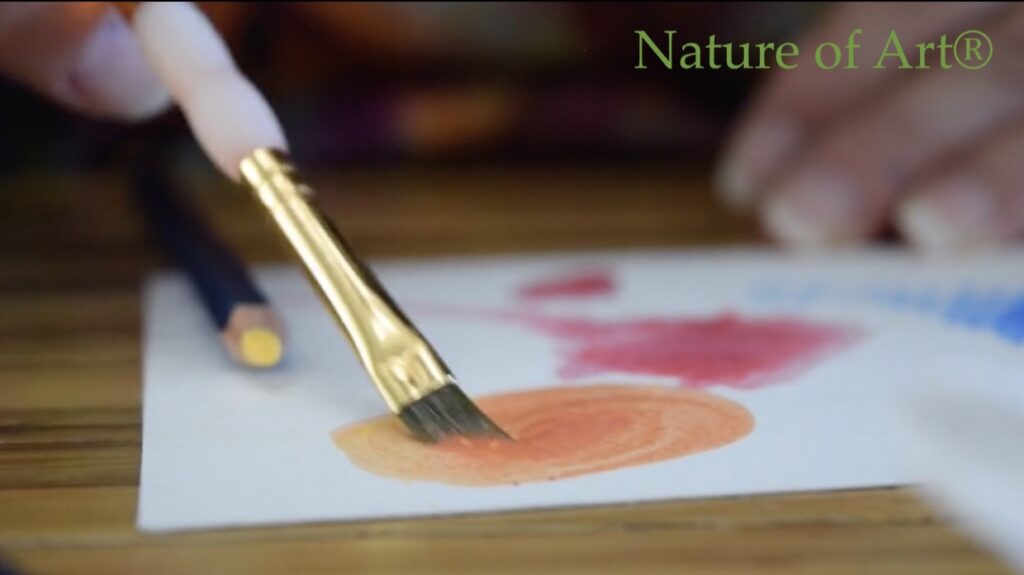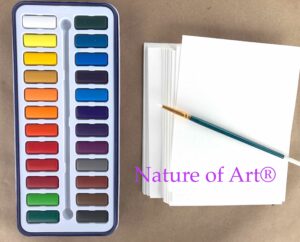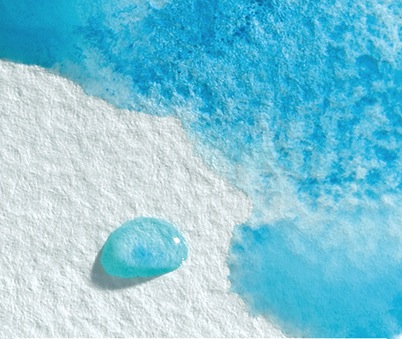
By Spramani Elaun
Painting earth-friendly is actually possible. Many fine artists are switching to safer alternative paints and painting methods because of years being exposed to toxic chemicals found in commercial paints.
Infact, my business Nature of Art® was founding for this very reason. As a commercial artist myself, I started my art career creating with very toxic paints and solvents. Which lead to my chemical senseity to these types of products. As much as I love good quality paints over the years I’ve changed my habits to work with cleaner safer paints and mediums. Being an earth-friendly mom, art teacher and art supply company, I’ve learned how to environmentally paint. I can’t wait to share these ideas in this blog!
You can learn more about my methods of teaching kids safe and non-toxic art by checking. out a few of my books like: Nurturing Children in The Visual Art Naturally© I dedicate an entire chapter to this topic.
Start with Buying non-toxic paints only
All these mediums come certified non-toxic and available in student grade. Student grade paints are non-toxic and have lower concentration of chemicals. Be sure these products have the U.S. ASTM D 4236 conforms seal or label on packing. If products carry a non-toxic seal or claims the product conforms to ASTM D 4236 then it has been evaluated by a qualified toxicologist for both acute or chronic hazards.
U.S. labeling law requires all companies selling or distributing art supplies for the use of young children must bare on their label conforms to ASTM D 4236 mark. Most adult fine artist supplies don’t have this seal, so be very careful when purchasing. It’s totally legal to sell toxic art supplies.
Most of these products have warning or caution labels. This usually means there are chemicals and must be handled with special care. To be truly earth-friendly I recommend not using any of these types of products and lean towards only non-toxic labeled products.
My top choices for safe non-toxic paints are:
- acrylic (student grade)
- watercolor
- gauche
- watercolor pencils
- watercolor crayons
Watercolor paints are earth-friendly
Watercolor paints are usually made with non-toxic organic binders and earth friendly. Gum arabic is a common binder found in most watercolor paints. Watercolor painting can be a very green and clean product to use. Lots of paintings can be produced with just small amounts of paint. You can find these in student grade and dry cake pan options.
Gouache paints are earth-friendly
Gauche comes usually with non-toxic binders that are safe for the environment and your health. Gauche is a very green and clean product. Lots of paintins can be produced with small amounts. You can find these in dry cake pans which last even longer. Gauche can also be found in safe student non-toxic grades. Gauche has no glossy binders and dries matte.
Watercolor pencils are earth-friendly
Watercolor pencils are water-soluble when wet with a paintbrush. Watercolor pencils last long and can produce so many illustrations and paintings with just one set. This product comes non-toxic, and is safe to use. There’s no loose residue to inhale, ingest or absorb. The binder is wax based.
Watercolor crayons are earth-friendly paints
You can color with watercolor crayons then turn them into paint because they dissolve by using water. Watercolor crayons are water-soluble and come non-toxic. The great thing about these crayons is they come only in wax sticks and have no wood surrounding them. Be sure to only purchase student grade non-toxic.

Acrylics are earth-friendly (student grade)
Acrylics come in non-toxic student grade, are water-soluble, available with safe binders and pigments, and now available in low VOC’s (Violent Organic Compounds Releasing in the Environment). Acrylics can paint on any type of surface, even recycled materials, cardboard, wood and much more. Acrylic paint can be biodegradable in the right conditions in landfills.
Use only water-soluble paints
This means it can be dissolved with just water without having to use toxic solvents like paint thinners. All the mediums listed here are water-soluble paints.
Give up spray paint varnishes, thinners & coatings
Give up products like varnishes, gloss coats, mineral spirits, paint thinner, acetone and turpentine. These products are made with toxic chemicals. These products are used in or on top of mediums to protect or make paints behave differently. Giving these products up means not being able to preserve artworks longer. These protective coats are bad for the environment and your health. It may take some time to change your habits and learn other ways to preserve and protect surfaces of artworks, but will be well worth it in the long run. I’ve been going without these products for years and have found many natural alternatives.
How to dispose of paint safely
Let acrylic paints dry on palettes and dispose of into the trash. Acrylic paint is fast drying and will peel off plastic, metal or glass palettes. Any acrylic on paper products just dispose in the trash. When you have wet leftover paints you have two options;
Let acrylic paints dry on palettes and dispose into the trash. Acrylic paint is fast drying and will peel off of plastic, metal or glass palette surfaces. Any acrylic on paper products just dispose into the trash. When you have wet leftover paint you have two options;
- Cover with plastic wrap to save and use again ater
- Wipe down with a paper towel to absorb paint into paper and dispose into trash.
Student grade paints have a better chance to breakdown and evaporate in the environment and become biodegrade like organic matter. Don’t do this in soil where you might grow food. Send to landfill soil. Keep paint out of drain system because most drains are reclaimed for other uses and can go into a water systems animals might get to later. Even though most children’s paints are non-toxic, if we have gallons of paints going into the water system, there’s no guarantee that pigments, even natural pigments can’t do harm to the tiniest living organisms. So do you part and keep heavy loads of paint out of drain systems and discard into trash cans.
I wipe paint brushes and palettes with a wippie or napkin to get large amounts of paints off them before you rinse in sinks. Acrylic paints can clog old drain systems or plumbing. Clean paintbrushes with basic dish soap, not paint thinner.
Transitioning into an earth-friendly artist takes time and some sacrifices, but is worth it in the long run for your health and the environment. If you have any questions regarding safe paints, I would love to hear from you
Warmly,
Spramani
- Cover with plastic wrap to save to use later
- Wipe down with paper towels to absorb into paper and dispose of in trash.
Student grade paints have a better chance to breakdown and evaporate in the environment and biodegrade like organic matter. Don’t do this in soil where you grow food. Send to landfill soil. Keep paints run off of any drain system because most drains are reclaimed for other uses and can go into a water system that animals might get to later. Even though most children’s paints are non-toxic, if we have gallons of paints going into the water system, there’s no guarantee the pigments, even natural pigments , can’t do harm to the tiniest living organisms. So do you part and keep heavy loads of paint out of drain systems.
I wipe paint brushes and palettes with a wippie or napkin to get all large amounts of paints off them before I rise in sinks. Acrylic paints can clog old drain systems or plumbing. Clean paintbrush with basic dish soap, not paint thinner.
Transitioning into an earth-friendly artist takes time and some sacrifices, but worth it in the long run for your health and the environment. If you have any questions regarding safe paints, I would love to hear from you
Warmly,
Spramani
All rights reserved © 2023, Nature of Art®

No part of this blog may be used or be reproduced in any manner whatsoever including reproducing, publishing, performing, and making any adaptions of the work – including translation into another foreign language without written permission except in the case of brief quotations embodied in critical articles and reviews. Nature of Art® Publishing P.O. Box 443 Solana Beach, California 92075.
